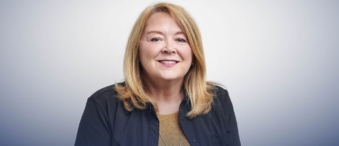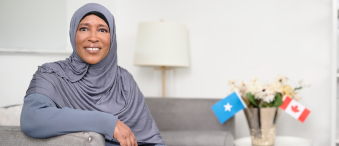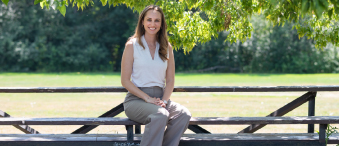Published: October 2024
Brandon Peacock shares the story of the afternoon of June 29, 2020, when he was shot three times — an innocent victim in a drive-by shooting — and rushed to The Ottawa Hospital Trauma Centre. This is Brandon’s story, told in his own words.
CONTENT WARNING: This story contains details of serious injuries due to gun violence.
It was late June 2020, and we were in the midst of the pandemic, so I was working my 9 to 5 job from home, like so many others. I was only 23 at the time. The hot summer weather had moved in, and my hair was getting long, so, I decided to drop by my barbershop late one afternoon for a quick cut — I’d be in and out.
Instead, my life changed the moment I approached the shop’s door — I was caught in the crossfire of a drive-by shooting. I was in the wrong place at the wrong time.
As the shots rang out, I used my large frame to shield the woman who was opening the door of the building. I felt three bullets hit me. One went through the bottom left of my shoulder blade — it came out of my collar bone and missed my heart and my lungs. The theory is the bullet ricocheted off one of my rib bones, because most of my ribs were broken on the left side.
The second bullet hit me in the left knee, it was a ricochet bullet that hit the wall first before hitting me. It wasn’t too bad. But it was the third bullet that blew the femoral artery in my right leg. It’s described as “a kill shot” in most cases.
“I was determined to survive.”
The woman who I helped shield grabbed some towels and started compressing my wounds to slow the bleeding as much as she could. I was losing blood quickly from my leg.
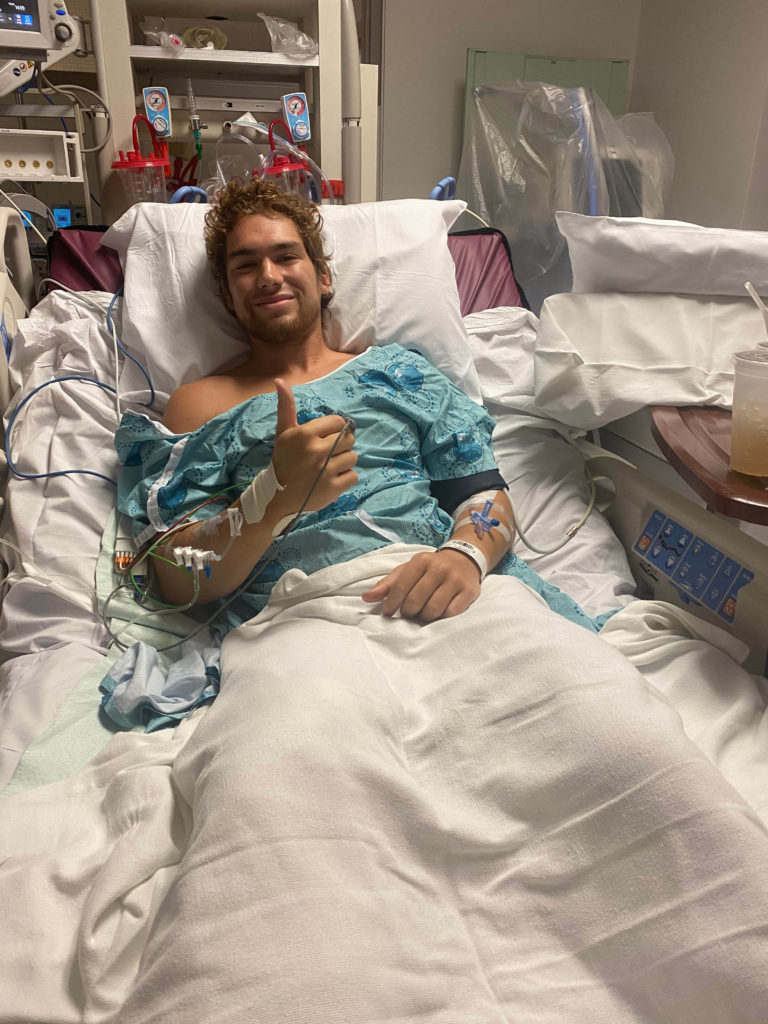
I knew it wasn’t good, but despite everything, as I lay there waiting for help, I was confident I was going to make it through — I just need to keep fighting. I never felt scared; I was determined to survive.
During those first minutes while help was on the way, the woman dialed my mom so I could talk to her. I told her what happened, and I said, ‘I love you and don’t worry.’
The first police officer was on scene within four minutes. He got a tourniquet on my leg right away which gave us enough time to make it to the hospital. That officer was instrumental in keeping me alive long enough to reach the Trauma Centre. From what I was told, had he arrived 30 seconds later, my outcome might have been very different. When healthcare professionals say mere seconds matter — they mean it.
“He talked to me the whole time. He spoke to me like I was his son.”
My memory obviously gets a little foggy here, but it was early evening, around 6 p.m., when I arrived at The Ottawa Hospital’s Trauma Centre at the Civic Campus — thankfully it wasn’t too far away from the scene. From that point on, everything happened so fast.
I was suddenly surrounded by incredible surgeons from each division — I now know they’re the trauma team. There were also residents and nurses — really anyone you could possibly think of was ready.
I remember there was a woman who was the trauma lead — I got the sense she had a military background because of the way she took command of the situation. She was exceptional. I later learned her name was Dr. Jacinthe Lampron. She was the perfect blend of keeping me hopeful while also telling me what they were doing.
The whole team was exceptional. I vividly remember another man caring for me who talked to me the whole time. He spoke to me like I was his son.
They did a full assessment, and my leg was a major concern. Next, I had CT scans – everything was happening fast. My parents were told I had a 50/50 chance of survival and there was a good chance I might lose my leg.
As you can imagine, they were distraught, but they remained hopeful that I would beat the odds.
Meet Trauma Medical Director Dr. Jacinthe Lampron
"We turned a life-threatening gunshot wound into a story of survival, thanks to our unwavering commitment to patient care."
— Dr. Jacinthe Lampron
“I still had both of my legs, but I wasn’t out of the woods.”
I had what’s known as compartment syndrome, which happens when there’s a painful build-up of pressure around your muscles. Mine was the result of all the blood that had pooled in my right leg. I needed a double fasciotomy — another term I had never heard of before. It is an emergency procedure to relieve the pressure, but we didn’t know if it would save my leg.
This surgery was critical to what my future would look like and took about eight hours. In addition to the double fasciotomy, they also performed a femoral bypass to take the vein out of my left leg to replace the artery in my right leg. The surgery was long, but I made it through to the next day. When I woke up in the ICU the next morning, I still had both of my legs, but I wasn’t out of the woods.
“The idea of single-patient rooms when the new hospital campus opens will make the world of difference for patients, like me.”
I now had a breathing tube and was hooked up to so many different devices. I had multiple blood transfusions, and my weight was down significantly — I was frail. My leg was a big balloon, my ribs were broken, so all I could do was lie in bed.
Because of the pandemic, I was moved to a room where I had to share space with one and then two other people. I must admit, I didn’t get much sleep at that point. In fact, the idea of single-patient rooms when the new hospital campus opens will make a world of difference for patients like me, and will provide a much better environment for recovery, including sleep.
By day two, I tried to opt out of pain medication. I’d drift off to sleep and I’d dream I was running and playing sports with my friends but then I’d wake up to this reality. So, I got off those meds quickly — it was tough, but that’s when I really started to process everything I’d been through. I wanted to have a clear mind to understand what happened, and then I started to make mental progress quickly.
By day five, I was supposed to have a skin graft because of how big the fasciotomy was on my right leg, but the surgeries kept getting pushed. Then Dr. Linden Head, a plastics specialist, came in and suggested he could stitch up the leg over a three-day period and he did it. Thanks to him, it eliminated the need for a painful skin graft and a process that they originally thought would take two weeks, so I was grateful. He was incredible.
“That’s when a real sense of determination set in for me.”
After that, it was important I didn’t move any more than necessary to ensure the incision healed. That wasn’t too hard because I wasn’t able to anyway. However, by day nine the physiotherapy team got me up and I used a walker. That’s when a real sense of determination set in for me — I wanted to go home, and I was ready to do whatever it took to make that happen.
I remember my physiotherapist told me if I could walk down the hallway, get into the stairwell, and then walk up two steps, I could leave because that’s all it would take me technically to get home. I said, ‘Let’s do it’. But she said ‘No, no. We need to work up to that.’
Determined to get the green light for my release, I said, ‘I’m going to do it right now’, and I did. I walked down the hall, up those two steps, turned around, walked back. When I got back, I remember drinking three Gatorades.
That walk was the hardest thing I’ve ever done, and since then I’ve trained for two marathons and now, I’m training for Ironman Canada. But the hardest thing I’ve ever done in my life was that hallway walk.
The next day, I got the green light to go home. Admittedly, I may have coaxed my medical team a little, but incredibly, I left hospital ten days after I was rushed in, clinging to life. I left in a wheelchair and my dad carried me into the house — my body was very weak.
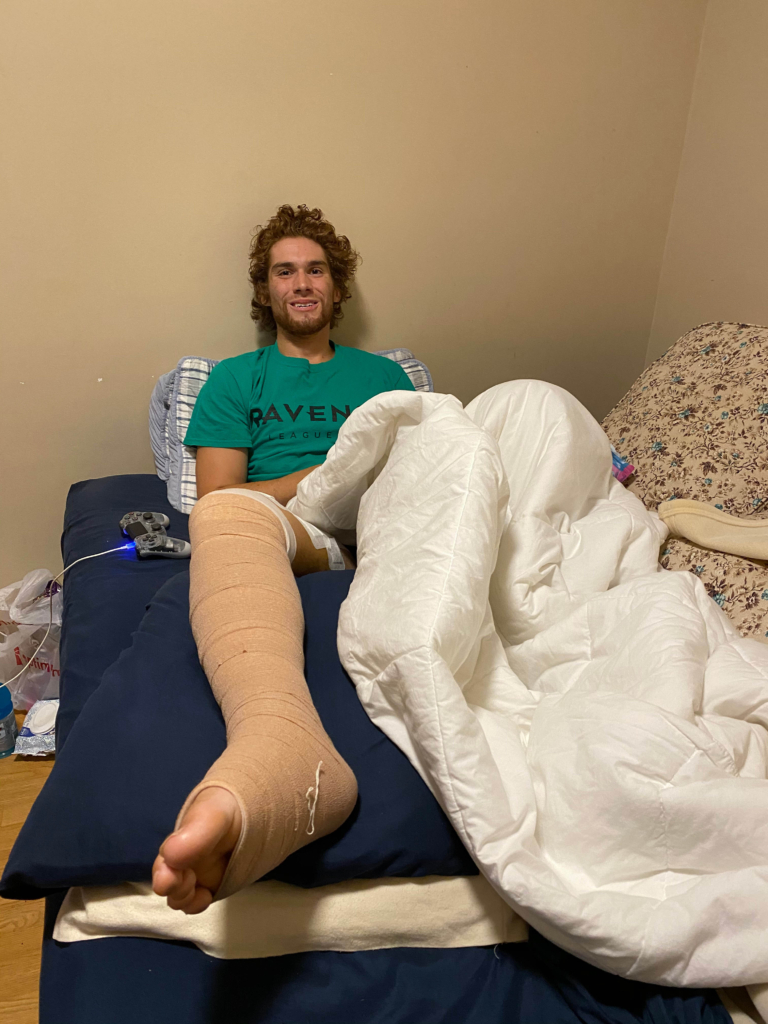
“He worked with me five hours a day, seven days a week in his home gym.”
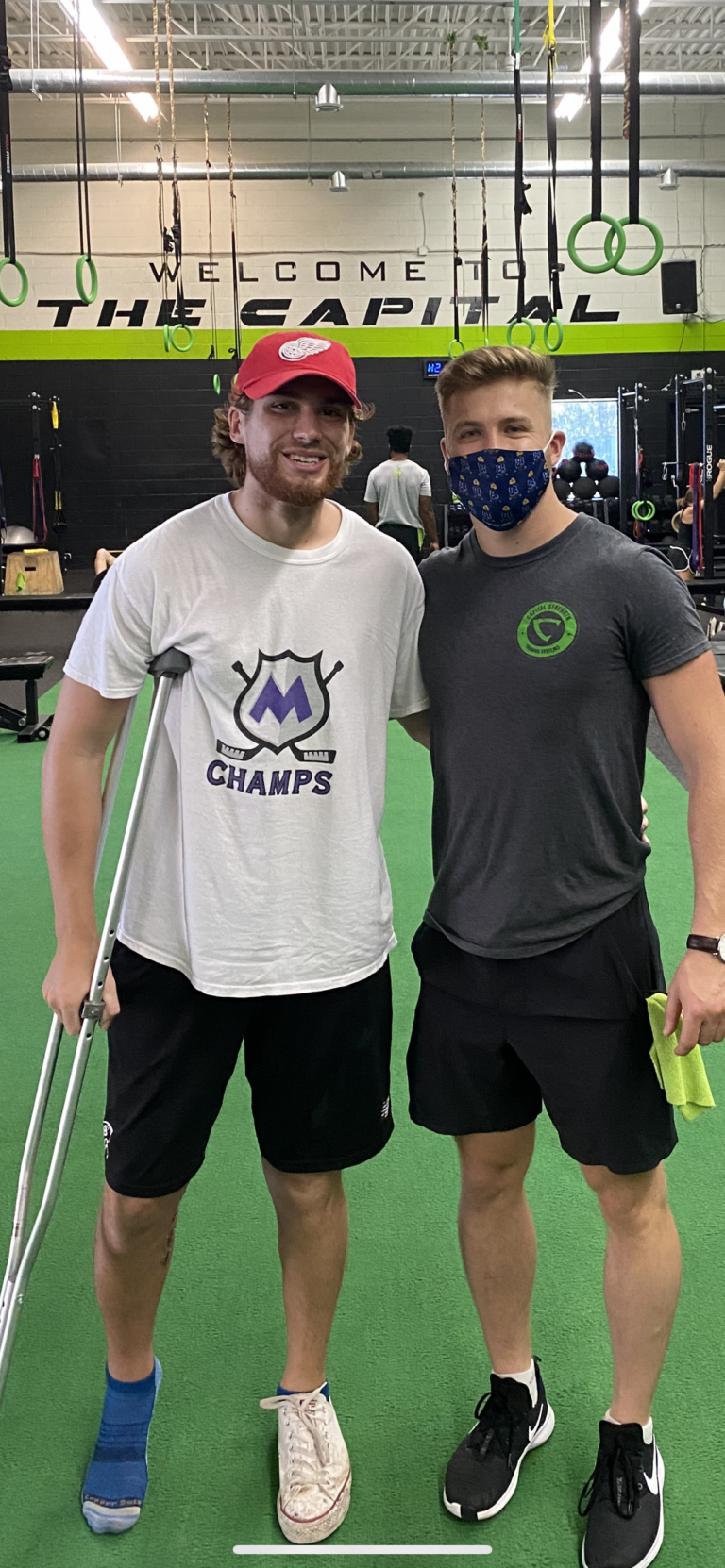
However, from that day on it was about building up my body strength again and coming to terms with the violent act I innocently found myself in the centre of on that late June afternoon.
Now remember, we were in the middle of the pandemic. My best friend was a physiotherapist, his office was closed, and he worked with me five hours a day, seven days a week in his home gym. Together, we worked hard, and I pushed through with sheer determination for 90 days. We were inseparable.
I returned to the hospital every couple of days, for the first two weeks. Then it became a weekly appointment, and by the end of August they wanted to see me every six months. During my late August visit to the plastics team, they did a small procedure to get the remaining bullet fragment out of my leg.
Today, I still have an annual visit back to the hospital to the vascular team for what’s called ABPI testing to assess the blood flow in my leg and to make sure everything is still working well. It’s thanks to my vascular surgeon Dr. Sudhir Nagpal, and his team who set me up for incredible success.
“I ran my first 5K within 60 days of the shooting.”
My recovery was impressive. I walked into my third or fourth out-patient appointment without crutches, and I ran my first 5K within 60 days of the shooting. Then, the next thing I knew, I was able to get back on skates again. I made a lot of progress quickly and The Ottawa Hospital team was obviously the first step — they gave me the opportunity to keep fighting.
It was during that time after my release from hospital when I realized this experience changed my life in many ways. I looked at life differently and that’s where my new path in life began — that’s where I came up with a new plan for my life.
The idea of climbing the corporate ladder was now in the review mirror, and I created Hit the Ground Running, a charity that helps trauma survivors reach their new 100%. It all came from that moment where I lay on the ground bleeding out thinking ‘If I don’t make it to tomorrow, am I going to be proud of the legacy that I’ve left behind?’ Perhaps not the typical thoughts of a 23-year-old, but that’s why I’ve changed my life plan and I’m helping others.
And so here I am, four years later, to say thank you. First, I want to thank Ottawa Police Constable Yanick Charron who got to my side quickly and gave me a fighting chance. Next, I want to thank all the talented surgeons and medical professionals at The Ottawa Hospital. I know there’s a very real possibility, with the nature of my injuries, that if we didn’t have a top tier trauma centre and this level of expertise available, I might not have survived — and I certainly may have lost my leg.
That fateful afternoon, I went from lying on the ground, wondering if I was going live, to today, building a great life that I love and helping others around the world who have experienced something very similar to me. And for that, I’m truly grateful and loving my life.


